If you are a regular reader of our website, you have probably noticed our interest, or one could call a borderline obsession, surrounding a particular animator group known for their striking designs and contributions to many Toei Animation series, and whose origins can be traced back at a small subcontracting company in the 80s called Monsieur Onion production.
If it is your first time reading about it, I would highly recommend reading our interviews with Terumi Nishii and with Hisashi Kagawa, who are part of this lineage of animators.
It is a lineage that first starts through the mentor-trainee relationship between Masami Suda and Junichi Hayama and which keeps breeding new artists to this date.
Naturally, when it was announced that Mr. Hayama was invited to come to Paris Japan Expo, we saw it as a good opportunity to meet with him and gather his testimony from his times at Monsieur Onion and the birth of this lineage.
Like our content? Feel free to support us on Ko-Fi!
You joined Monsieur Onion Productions[1] just after you graduated from high school instead of joining an art or vocational school. Why did you make this choice?
Junichi Hayama: At first, I wanted to join a vocational school, but one of my friends had a brother who was an animator. It’s him who introduced me to the industry and made me enter Monsieur Onion.
Did you draw a lot before that? Have you been following classes or something?
Junichi Hayama: I only followed the art classes that were given in high school.
How was it to go pro just after graduating? Do you think it was a more valuable experience than some of your colleagues who studied for two years in a vocational school?
Junichi Hayama: The person who introduced me to Monsieur Onion is the one who told me not to go to school, and that was good advice. But that doesn’t mean I think schools are useless: there, you can meet people, make friends, and build yourself a network. I didn’t get all that. I wouldn’t say that it was unfair, but I did feel a bit jealous.
Who was your first teacher when you joined Monsieur Onion?
Junichi Hayama: I don’t think you’ll see who I’m talking about. But the first person who taught me when I did in-betweens was someone called Takahashi.
You already had been promoted to key animator when working on Fist of the North Star[2]. Many animators working on the series imitated the style initiated by Yoshinori Kanada[3], but you, on the other hand, stated that you preferred to follow Masami Suda’s[4] gekiga aesthetic. Can you tell us why?
Junichi Hayama: (Thinks) I spent a lot of time watching anime and reading manga in middle and high school. That’s when I started drawing and looking for a style of my own. At the time, the first ones to influence me were Yoshikazu Yasuhiko[5] and Tomonori Kogawa[6] when it came to anime. There were also the mangas of Yuki Hijiri[7]. They had a big impact on my generation. At the time, I tried to draw like them. It was also when Kanada was very popular, and many people imitated his way of creating movement. As for me, I can’t say that I didn’t receive any influence, but when I began animating, I didn’t want to do it like everybody else. And so, when I started working on Fist of the North Star, I was really struck by Mr. Suda’s drawings; they had a big impact on me. Since then, I’ve always been chasing after Mr. Suda.
And so it’s at that point that you became Mr. Suda’s disciple?
Junichi Hayama: Yes.
Let’s get back to the topic of Monsieur Onion. There were multiple groups within the studio, including the one you formed with Yoshihiko Umakoshi[8], Hisashi Kagawa[9], and Tatsufumi Ito[10]. Was there any sense of rivalry between the various groups? More generally, what was the atmosphere within the studio?
Junichi Hayama: I don’t have much to tell you about this because I didn’t pay any attention to all that. I became an animation director at around 23, and my only objective was to better myself and my drawings. I spent my time drawing and didn’t really keep track of what was happening around me.
In 1990, there was an exodus of many Monsieur Onion animators, with, among others, you, Mr. Kagawa, and Mr. Umakoshi leaving. What were the circumstances behind this?
Junichi Hayama: Maybe I shouldn’t say this, but I think it was because of me. (laughs) From the start, my objective was to help the studio grow and then leave. Except that I never realized that some people had joined the company just to work with me, so when I left, that caused some problems. I only realized that later, so when I left, I was completely unaware of all this. And I felt a bit bad when I found it out.
Why did you go freelance instead of joining another studio?
Junichi Hayama: Because I wanted to try it out! (laughs)
And now, do you think it would have been better to create your own structure to work with your disciples?
Junichi Hayama: I don’t think I’d be fit for that.
Moving on to more recent events, we’d like to ask about your work on Tiger Mask W[11]. Mr. Kagawa asked you to help out as animation director on the climactic fight between Tiger Mask and The Third in episode 37. Could you tell us more about your impressions of the production and staff?
Junichi Hayama: On Tiger Mask W, I was the action animation director, and I had a very strong feeling that animators struggled with action scenes. As you know, Tiger Mask is about pro-wrestling, so when people fight, it’s necessary to have a solid grasp of anatomy and strong drawing skills. But I noticed that there weren’t a lot of people who were able to meet that level.
Today, you’re also famous as an illustrator and calligrapher. How did you start using such a special brush pen?
Junichi Hayama: That was around 20 years ago, I think? I was invited to the Anime Expo in the US, and my wife suggested I take a brush pen for the signing sessions. She said that it would make it feel more special than a regular one. I thought that was a good idea, and that’s how it all started.
And so, has this influenced your work as an animator or designer?
Junichi Hayama: No, not at all. I don’t use it for animation or anything professional. For me, it’s really just something I use to make drawings, sketches, or illustrations.
And what do you think of animators using a brush pen for their animation, such as Yoshimichi Kameda[12]?
Junichi Hayama: Well, I think it’s a lot of work, and that’s why I don’t use it myself. When you’re an animator, you can’t just think about yourself. You have to think about the cleanup artist, the in-betweener, and the person in charge of the coloring. When you use a brush, you’re giving them that much more work, or you have to do it all yourself. In any case, as an animator, I think it’s necessary to always think about the other people around you.
In 2007, a movie adapting the Phantom Blood part of Jojo’s Bizarre Aventure was released in Japanese theaters. This movie has never seen any release outside its theater distribution. You worked on it as a Character Designer and Animation Director. Is there a reason why this movie never had any home video release?
Junichi Hayama: I don’t want you to see me angry and pissed off, so it is better if I don’t answer this question.
Interview by Dimitri Seraki and Matteo Watzky
We wish to thank Mr. Hayama Junichi for his time, as well as the staff of Paris Japan Expo who helped us organize this interview.
Special Thanks to Mathilde Nouaillier
Notes
[1] Monsieur Onion Production. An anime studio mainly taking subcontracting work for Toei Animation in the 80s. The working conditions were quite erratic as its president had no experience running a company, and the pay they offered for each cut was one of the lowest in the industry at the time. The company was taken over in 1997 and continues business under the name Studio Kagura.
[2] Fist of the North Star (1984 – 1987), Toei Animation, TV Series, dir. Toyoo Ashida. This Mad Max-inspired adaptation of a manga by Tetsuo Hara and Buronson was one of Toei’s most popular series at the time and one of the most iconic anime of the 1980s. It has since then received many sequels and spin-offs.
[3] Kanada Yoshinori (1952-2009). One of the most important animators in Japan, he revolutionized character, effects, and mecha animation on 1970’s works such as Zambot 3, Daitarn 3, and Galaxy Express 999. He and his students spawned many imitators throughout the next decades, such as Masahito Yamashita, Hiroyuki Imaishi, and Yoshimichi Kameda. In the 80s, Kanada himself became a close collaborator of Hayao Miyazaki and finished his career as a storyboard artist in Square Enix, making multiple contributions to the Final Fantasy franchise.
[4] Masami Suda (1943 – 2021). Legendary animator and character designer who started his career at Tatsunoko Production and later joined Toei Animation. He is most famous for his contributions to the Science Ninja Team Gatchaman and Fist of the North Star. His way of drawing big, muscular, superheroic men has made him famous.
[5] Yoshikazu Yasuhiko (1947 – ). Animator, illustrator, mangaka, director, and character designer well-known for his collaboration with studio Sunrise as the character designer and animation director of Mobile Suit Gundam. There, he revolutionized character design philosophy. He was also an extremely talented animator who set a gold standard for realistic character acting in the 1970s. Today, he is still active as a manga artist and director and has recently released a new movie, Cucuruz Doan’s Island.
[6] Kogawa Tomonori (1950-). Ex-Tatsunoko animator and animation director who became famous for his work on the Yamato franchise and his collaborations with Yoshiyuki Tomino on Space Runaway Ideon or Combat Mecha Xabungle. His students from studio Beebeow would have a major impact on Sunrise’s aesthetic in the 1980s.
[7] Yuki Hijiri (Kiyotoshi Hasegawa) (1949 – ) Science-Fiction manga author best known for the Locke the Superhuman series and their original character designs for the Robot Romance Trilogy series Voltes V and Tôshô Daimos. One of the main members of the Sakuga Group doujin circle alongside Yoshiaki Baba and Tarô Minamoto.
[8] Yoshihiko Umakoshi (1968 – ). Animator and Character Designer trained at Monsieur Onion under Junichi Hayama. He is famous for his character designs on Magical DoReMi and HeartCatch PreCure! His style is heavily influenced by Shingo Araki and Yoshikazu Yasuhiko, which can be seen in the slender shapes of his characters. Founder of Studio Shokaze.
[9] Hisashi Kagawa (1965 – ) Animator and Character Designer trained at Monsieur Onion Productions under Junichi Hayajama. He is well known and respected for his very recognizable work as an animation director on Sailor Moon and his character designs for Fresh Pretty Cure! Although he has been freelance since the 2000s, he is mostly affiliated with Toei Animation productions.
[10] Tatsufumi Itô (Tamagawa) (1964 – 2020). Animator and Director. Before going pro, he started an amateur animation group called Animation Bero Bero, with whom they directed an animation short film featuring Yoshinori Kanada. After joining Monsieur Onion Production, he became close friends with Hisashi Kagawa and Yoshihiko Umakoshi. He is best known as the director of Symphogear.
[11] Tiger Mask W 2016 – 2017, Toei Animation, TV Series dir. Toshiaki Komura. A sequel to the first two anime series of Tiger Mask. The series follows Naoto Azuma, a pro-wrestler who, to avenge his paralyzed coach, takes up the persona of Tiger Mask to fight the malignant Tiger’s Den organization. The series shines through its well-choreographed fights and animation by Toei Animation veterans such as Naotoshi Shida.
[12] Kameda Yoshimichi (1984-). One of the most important Kanada-style animators of the last 15 years, he has long been affiliated with studio Bones and now works with studio WIT. He is most famous for his work as an animator on Fullmetal Alchemist: Brotherhood, Space Dandy, and One Punch Man and for the character designs of Mob Psycho 100. One of his most notable idiosyncrasies as an animator is the use of thick brush lines to create shadows and highlights.
Like our content? Feel free to support us on Ko-Fi!
You might also be interested in
Oshi no Ko & (Mis)Communication – Short Interview with Aka Akasaka and Mengo Yokoyari
The Oshi no Ko manga, which recently ended its publication, was created through the association of two successful authors, Aka Akasaka, mangaka of the hit love comedy Kaguya-sama: Love Is War, and Mengo Yokoyari, creator of Scum's Wish. During their visit at the...
Ideon is the Ego’s death – Yoshiyuki Tomino Interview [Niigata International Animation Film Festival 2024]
Yoshiyuki Tomino is, without any doubt, one of the most famous and important directors in anime history. Not just one of the creators of Gundam, he is an incredibly prolific creator whose work impacted both robot anime and science-fiction in general. It was during...
“Film festivals are about meetings and discoveries” – Interview with Tarô Maki, Niigata International Animation Film Festival General Producer
As the representative director of planning company Genco, Tarô Maki has been a major figure in the Japanese animation industry for decades. This is due in no part to his role as a producer on some of anime’s greatest successes, notably in the theaters, with films...
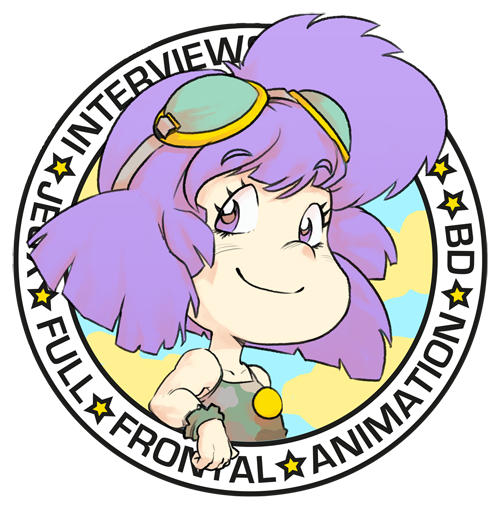
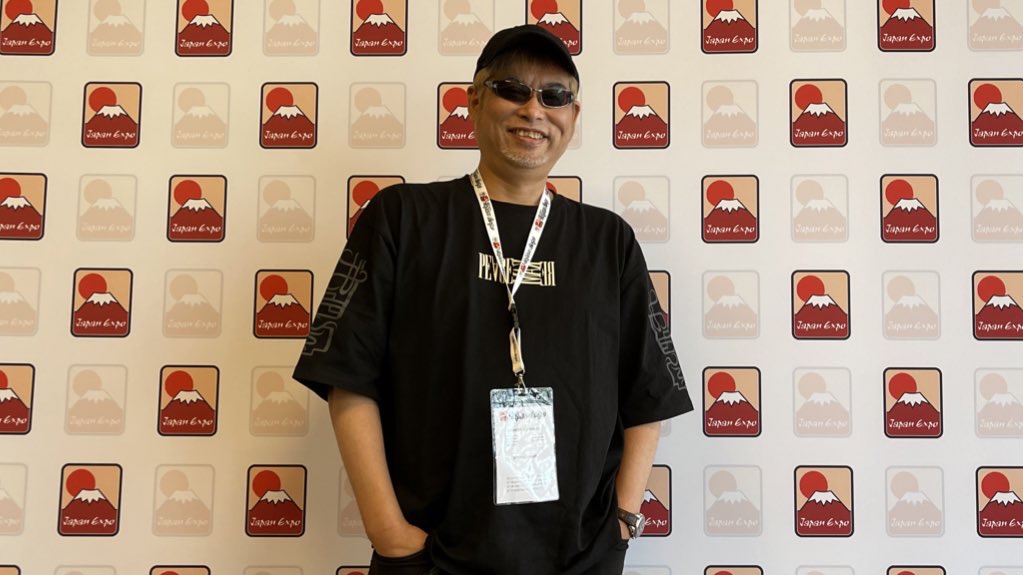
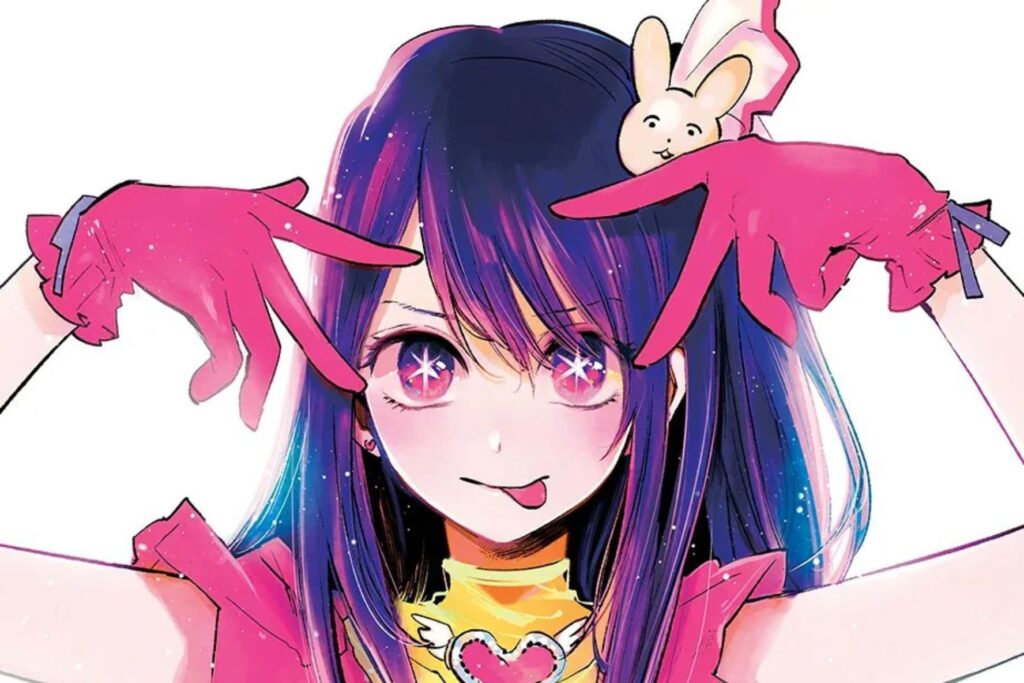
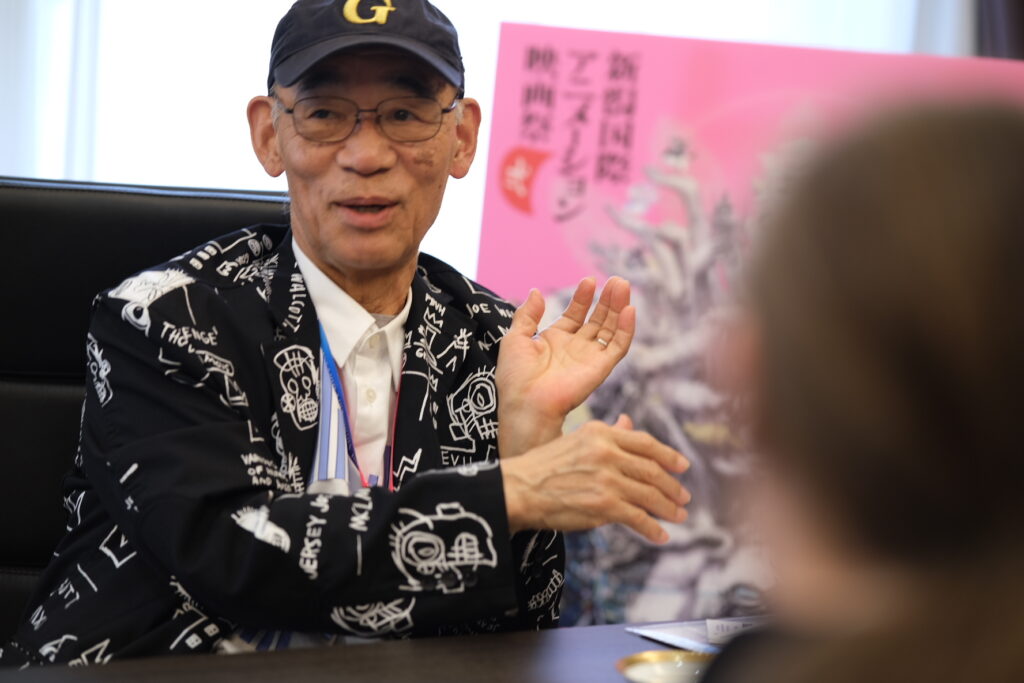
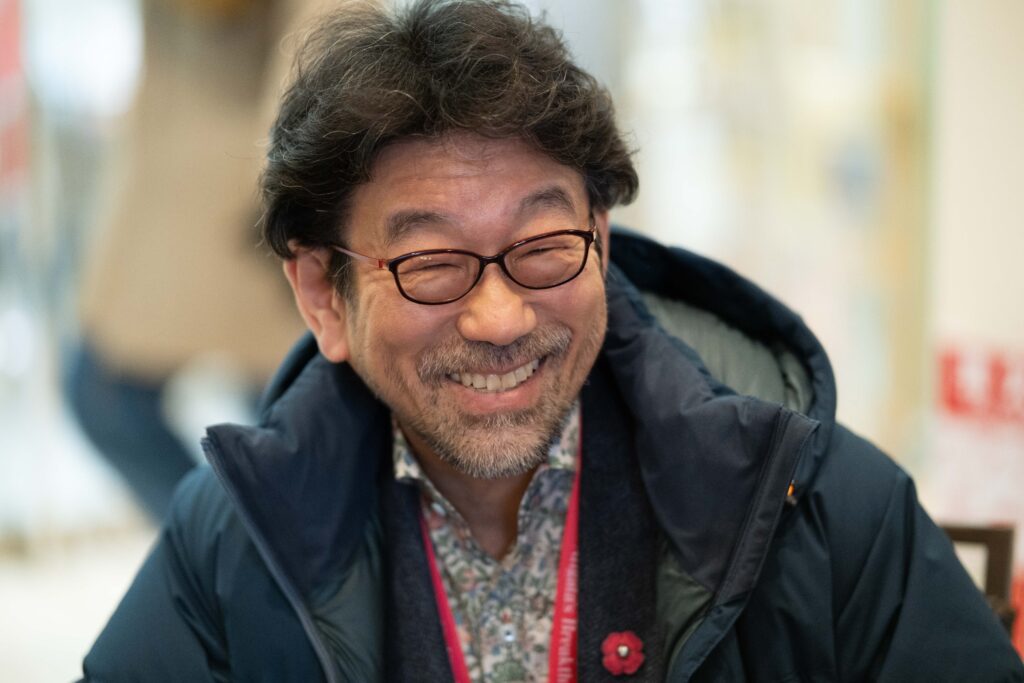
Recent Comments